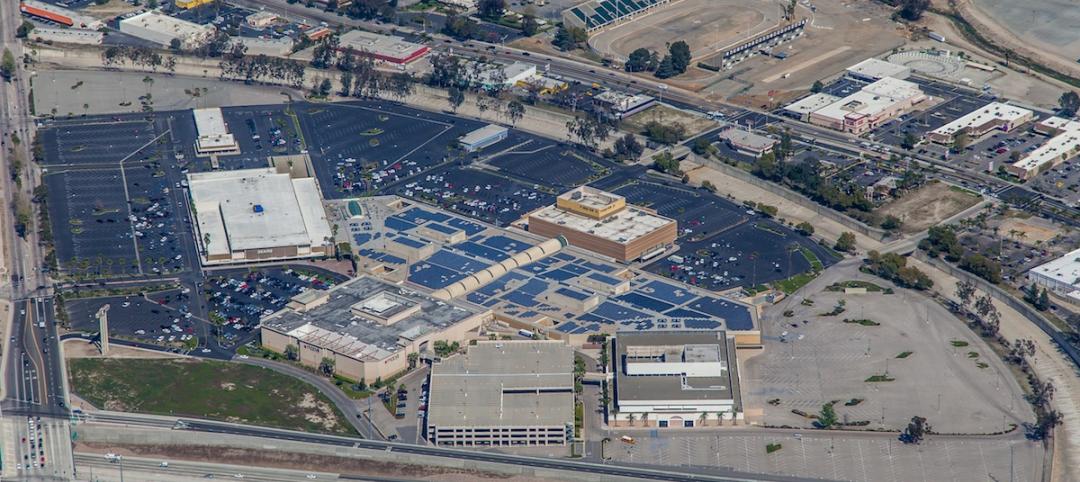In June 2020, Johns Hopkins University completed its $372.5 million acquisition of the Newseum in Washington, D.C., which had closed the year before. A $275 million renovation of that building resulted in the Johns Hopkins University Bloomberg Center, a higher education facility that brings together many of the university’s divisions within a building redesigned as a vertical campus for transparency and sustainability.
The 435,000-ft facility opened last August at 555 Pennsylvania Avenue at the heart of the nation’s capital. It is anchored by Johns Hopkins’ School of Advanced International Studies, its Carey Business School, its Krieger School of Arts and Sciences, the Peabody Institute, and the newly launched School of Government and Policy. The Center’s mission, stated Johns Hopkins, is to “connect the worlds of research and policy, educate future leaders and innovators, convene a range of viewpoints to foster discovery and dialogue, and bring a fresh infusion of artistic expression.”

More than 3,000 students, faculty, researchers, and staff come through this 10-story building daily. The Center allocates 300,000 sf of its interior space to learning, with 38 high-tech classrooms of varying capacities. On the east side of the building’s seven-story-tall interior atrium, a 20x27-ft “floating” glass classroom hangs from a pair of bridge girders. On the west side of the atrium rises a 70-ft treehouse-like stacked assemblage of classrooms and open lounges.
The atrium is anchored by a sloped seating area called The Beach, a nod to the grassy space at Johns Hopkins’ Homewood campus in Baltimore.
Ennead gets another shot at an old project
Inside the Center as well are the Irene and Richard Frary Library on its second floor, an event space called The Link on its fourth floor, a 3,350-sf multimedia suite, a fitness and wellness center, a lounge with 435 seats, and a 375-seat theater with a 640-sf stage and 7,000 sf of backstage support. Space has been earmarked for a future restaurant and café.

The building’s exterior is encased in an enlarged glass façade and a 50-ft curtainwall that faces Pennsylvania Avenue; pink marble cladding, and 16,888 sf of roof terraces. “As architects, it is a rare opportunity to revisit an earlier design and reimagine it for an entirely new purpose,” said Richard Olcott, FAIA FAAR, Design Partner at Ennead Architects, this Center’s exterior architect, and the original architect of the Newseum.
This project’s building team also included SmithGroup (AOR, lighting design, fire protection, life safety engineering), Rockwell Group (interior architect), Clark Construction (GC), Wiles Mensch (CE), LERA Consulting Structural Engineers (SE), WSP (MEP engineer, fire protection, life safety engineer), Oehme, van Sweden (landscape architect), Babich Acoustics (acoustics), and BrightTree Studios (A/V). MGAC provided project and cost management support.
A reduced carbon footprint

Concerning the atrium, Rockwell Group identifies two key insertions: the “Room Stair” that wraps around the building’s glass rooms and lounges; and the “Room Bridge” that houses classrooms and lounge spaces, and bridges both sides of the building.
The building team eliminated 77.8 tons of carbon dioxide from the construction process by using CarbonCure concrete. The team also recycled or diverted from landfills 96.6 percent of the project’s construction waste that, according to SmithGroup, included demolishing 50,000 sf of interior floorplates to make way for 90,000-sf floorplates, and removing the Newseum’s marble exterior panels.
Related Stories
Office Buildings | Feb 23, 2015
The importance of quiet and the consequences of distraction
Recent work style studies show that the average knowledge worker spends 25-35% of their time doing heads-down focused work. Once thrown off track, it can take some 23 minutes for a worker to return to the original task.
University Buildings | Feb 20, 2015
Penn strengthens campus security by reviving its surrounding neighborhood
In 1996, the University of Pennsylvania’s sprawling campus in Philadelphia was in the grip of an unprecedented crime wave. But instead of walling themselves off from their surrounding neighborhoods, the school decided to support the community.
University Buildings | Feb 18, 2015
Preparing for the worst: Campus security since Virginia Tech
Seven years after the mass shootings at Virginia Tech, colleges and universities continue to shake up their emergency communications and response capabilities to shootings and other criminal threats.
University Buildings | Feb 17, 2015
BD+C exclusive: How security is influencing campus design and construction
Campus crime—whether real or perceived—presents Building Teams with more opportunities for early-stage consultation with university clients.
Architects | Feb 11, 2015
Shortlist for 2015 Mies van der Rohe Award announced
Copenhagen, Berlin, and Rotterdam are the cities where most of the shortlisted works have been built.
Higher Education | Feb 3, 2015
Integrated Learning Neighborhoods: A solution for linking student housing with the typical student experience
Just as urban housing fits into the city as a whole, student housing can be integrated into the campus network as a series of living/learning neighborhoods, write Gensler's Brian Watson and Mark McMinn.
Sponsored | | Jan 26, 2015
Arriscraft delivers wow factor for the University of Wyoming’s remarkable Marian H. Rochelle Gateway Center
The state-of-the art Marian H. Rochelle Gateway Center successfully fuses the university’s time-honored brand qualities with a leading-edge technological infrastructure.
Sponsored | Green | Jan 26, 2015
Shopping centers set their sight on solar
As part of its pledge to environmentally sound practices, real estate investment trust Macerich is implementing solar across its portfolio of 85-plus properties in 19 states.
| Jan 7, 2015
University of Chicago releases proposed sites for Obama library bid
There are two proposed sites for the plan, both owned by the Chicago Park District in Chicago’s South Side, near the university’s campus in Hyde Park, according to the Chicago Sun-Times.
| Jan 6, 2015
Snøhetta unveils design proposal of the Barack Obama Presidential Center Library for the University of Hawaii
The plan by Snøhetta and WCIT Architecture features a building that appears square from the outside, but opens at one corner into a rounded courtyard with a pool, Dezeen reports.

















